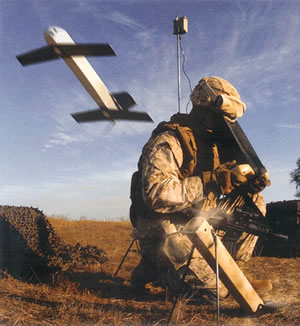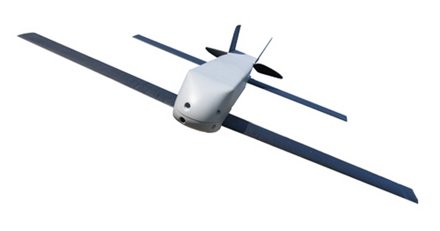During the mid-2000s DARPA, later followed by the U.S. Air Force esearch Lab, promoted research and development of technologies related to the use of miniaturized, loitering aerial weapon systems. One of the programs evolving from these studies was Project Anubis. The objective of the project was the development of a prototype for a Non Line of Sight (NLOS) weapon system to engage time-sensitive, fleeting, high value targets. The Anubis weapon was an armed, tactical miniature aerial system (MAV), equipped with an imaging sensor capable of target identification, tracking and terminal guidance. The MAV is also equipped with a small warhead for lethal attack.
The system employs innovative seeker/tracking sensor algorithms that enable engagement of stationary or maneuvering targets ensuring high kill probability. The small warhead utilized with the system results in ‘very low collateral damage’. In fact, Anubis will be able to perform what special operations snipers are doing today – but offer operators more opportunities to strike, perform more complex missions at longer range and ensure maximum safety for the shooter.

Since 2008 Anubis was tested and demonstrated such capabilities, achieving the range, accuracy, flight time and lethality to defeat target sets beyond the range of current squad level weapons. In January 2010 small UAV specialist Aerovironment has been awarded the final increment of $1.18 million for the third phase of development. According to the Air Force, Anubis will be able to track-down high-value maneuvering targets flying in ‘non-line-of-sight’ conditions (hinting at urban warfare).
Aerovironment is not relating officially to the Anubis program, but has unveiled a similar weapon system called Switchblade. If Anubis is in fact the Switchblade Aerovironment is already offering, it will also have a potential to become an aerial munition offering new capabilities for small UAVs sofar unable to carry out such missions. In December 2010 the company was selected as one of three finalists for the Air Force’s LMAMS program, aiming to fieldminiature-lethal drone capability with Special Operations units by 2012.

AeroVironment describes the Switchblade as the warfighter’s “magic bullet”. It can rapidly provide a powerful, but expendable miniature flying Intelligence, Surveillance and Reconnaissance (ISR) package on a Beyond Line-of-Sight (BLOS) target within minutes. This miniature, remotely-piloted or autonomous platform can either glide or propel itself via quiet electric propulsion, providing real-time GPS coordinates and video for information gathering, targeting, or feature/object recognition. The vehicle’s small size and quiet motor make it difficult to detect, recognize, and track even at very close range. The Switchblade is fully scalable and can be launched from a variety of air and ground platforms. It is controlled via a common ground launcher, also used for controlling the RQ-11B Raven, Wasp or Puma.
The Switchblade’s payload and launcher, weighing less than six pounds total, can be carried in a backpack by a single soldier. The mini UAV, which sends streaming video and GPS coordinates back to its operator, can be transformed from an intelligence, surveillance and reconnaissance UAV into a mini bomb striking a target beyond the line of sight.
The battery-powered vehicle has a very low visual, acoustic and thermal signature. AeroVironment says the the weapon can also be deployed from submarines, ground vehicles and a manned, as well as unmanned, aircraft. It is designed to operate at low level – below 500 ft above ground, and at a maximum altitude 15,000 ft. Officially, Switchblade has an endurance of ‘greater than five minutes’, but the system is scalable to meet changing user requirements.
The company already produces the Wasp III micro-UAV for the U.S. Special forces and Marine Corps and in 2008 has been awarded a development project for the “Stealthy, Persistent, Perch and Stare (SP2S) UAS”, based on a modified WASP design.

















